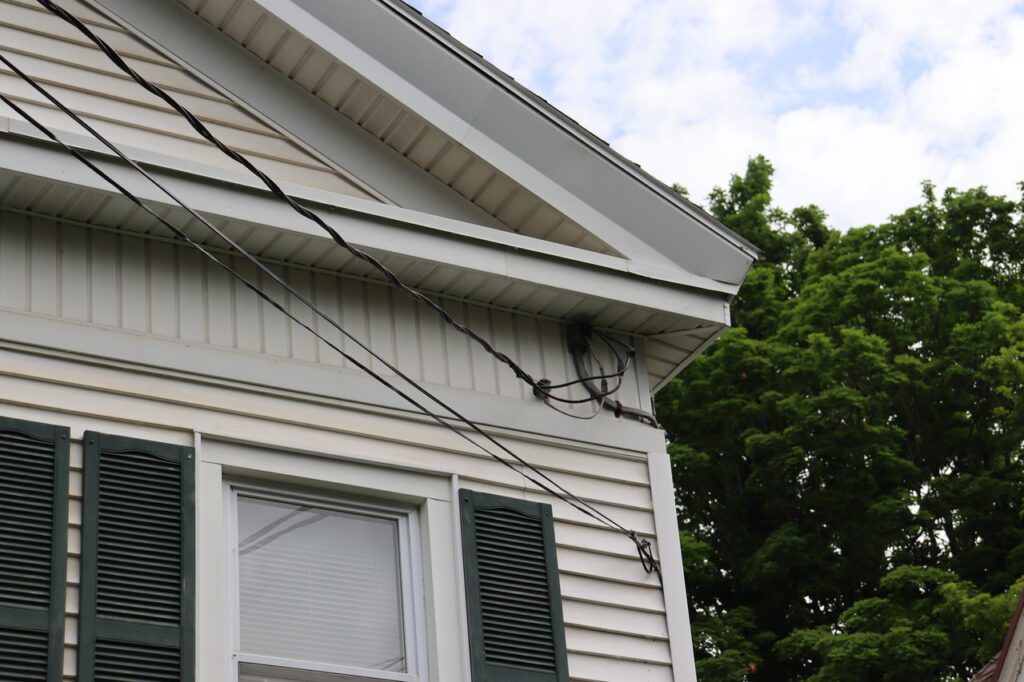When you think about it, electrical transmission is a lot like a relay race.
The first leg of the relay starts at power plants, where vast amounts of electricity are produced. After the electricity leaves the plant, it flows through high-voltage power lines to substations, where the next leg begins.
From there, substations step down voltages to lower levels as it’s prepared for distribution. As electricity streaks toward homes and businesses, the voltage steps down several more times.
As we reach the final leg of the relay, voltages become low enough for safe use. For covered line wire, this stage is where it shines, serving as the last mile connecting end users to the larger grid.
Like many single conductor cables, covered line wire consists of a solid or stranded copper wire insulated with either high molecular weight polyethylene (HMWPE) or crosslinked polyethylene (XLPE).
Unlike other insulated cables, the HMWPE surrounding line wire isn’t considered electrical insulation. This means installers must treat covered line wire as a bare wire when they install it or perform routine maintenance and repairs.
So, what does the insulation do if it isn’t protecting people and animals from shock? In this case, it protects the wire from a variety of external threats, including weather, vibrations, and crossed leads. The polyethylene coating is also strong enough to resist abrasions, moisture, chemicals, oil, and even sunlight, making it a good choice for wet areas.
Electrical distribution has two distinct steps – primary and secondary.
Primary distribution begins after electricity leaves the substation. At this stage in the journey, the voltage is still high, ranging from 5kV-35kV, but not as high as during the transmission phase. At this point, power is going to specific regions, but not a specific neighborhood or location yet.
Once the electricity is ready for delivery to a particular area or neighborhood, secondary power distribution occurs. As a secondary distribution line, covered line wire carries a much lower voltage than transmission or primary distribution feeders and is meant to provide direct service to homes and businesses.
For reference, the average home used to run on a 120-volt system while larger appliances employed a 230-240v system, but many homes are moving toward a complete 240v system. Larger machines, like those found in factories and other industrial locations, may call for voltages as high as 600v.
Oftentimes, workers use covered line wire for overhead service drops, which pick up from pole-mounted transformers and connect to a building’s electric service meter.
The voltage in these lines matches the user’s voltage and consists of three cables – two hot and one bare neutral. Utilities can either install lines overhead or underground depending on the area, home’s age, and owner’s preference.
But, as with anything electrical, installers and utilities need to follow several NEC guidelines to ensure everything is safe and up to code.

According to Article 230.23(B) of the National Electrical Code, wires used for service drops “shall not be smaller than 8 AWG copper or 6 AWG aluminum or copper-clad aluminum.”
The guidebook also has several rules in place about how high off the ground wires need to be, based on the location. Article 230.24(B) outlines the rules for overhead conductors less than 1kV, which include:
In every case, the wires are high enough off the ground to avoid accidental contact with people, animals, objects, or other threats.
Unlike homes and small businesses, which generally rely on lower voltages and single-phase power, industrial and commercial buildings have different requirements.
Larger service drops rely on three-phase systems to effectively deliver power for machines, motors, and heavy load devices. In a three-phase system, three wires carry current alternating current (AC), but in cycles. Each cycle is 120 degrees, or 1/3 cycle, apart from the others.
The result is a smooth, balanced, and constant load, which can reduce vibrations in motors and improve harmonics in the programmable logic control (PLC). Vibrations in the system are caused by Eddy currents, which are electrical current loops caused by changing magnetic fields.
When you get two wires next to each other, they could collide, which causes harmonics in machines. When harmonics are too high, for example if a phase has less power than the others, the machine may not perform as well, and could potentially damage drives, motors, wires, insulation, PLCs, and other parts.
If there’s a lot of stray current, it could cause the low-voltage controls in a machine to misbehave, either by speeding up or slowing down, compromising safety.
As we introduce more innovations to the electrical grid, secondary distribution lines will also improve.
What could the future look like for electrical distribution and covered line wire? With more severe weather events happening, it’s entirely possible that future developments may move underground. Unlike overhead wires affected by wind, rain, snow, and other threats, underground wires are safe from most threats.
One thing remains for certain, though. Covered line wire is a cost-effective, reliable solution to efficiently get electricity from the grid to our homes.